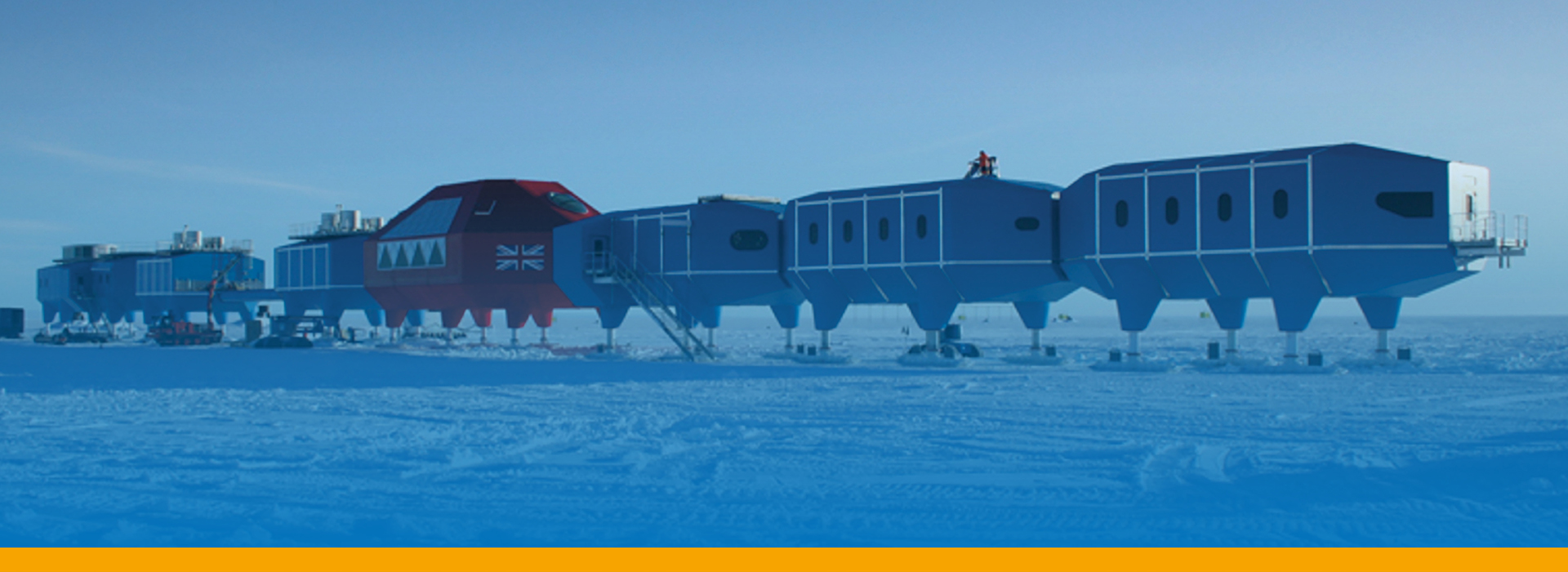- HomeHome
- Knowledge HubKnowledge Hub
- Case StudiesCase Studies
- Halley VIHalley VI
Halley VI

Summary:
- Location: Antarctic
- Product area: Hydraulics
- Service Area: Advanced design & technology
Our Flowtech engineers were tasked with designing and installing hydraulic legs on an Antarctic Research Station, taking into account the specific environmental concerns in the region to create a workable solution.
Challenge
Located in the Antarctic on a floating ice shelf, several Halley research stations are specifically positioned to gather important information such as weather and climate data. Studies have taken place in this location for many years and have played a critical role in the research that identified a hole in the ozone layer in 1985.
Unfortunately, due to their static nature, Halley research stations I to IV floated off into the Antarctic on a great iceberg and Halley V was decommissioned as a result of being located on the wrong side of a potential fault line.
The challenge, in this case, was to provide a safe home and working environment for the research team to allow the continuation of extensive scientific and environmental research.
Concept
The new station, Halley VI would be comprised of eight modules (each the size of a terrace house) weighing between 150 and 220 tonnes.
The concept was to construct the first ever fully relocatable research station deployed in the Polar Regions. The engineering team had the task of implementing the hydraulic system and legs, on which the modules are supported, to meet the specific requirements of load holding, low temperature and environmental concerns.
Solution
Halley VI is unique in that the entire station is transportable and can be towed and relocated, with the modules able to be raised as snow builds up beneath them. The modules are mounted on legs with built-in hydraulic cylinders that are used to raise and retract the legs, enabling a snow platform to be constructed beneath the ski foot on each leg. The legs are then synchronously extended to raise the module.
Benefit
The entire base stands on a hydraulic leg-and-ski system that allows it to be raised above the annual snowfall, and periodically transported to another location. If these adjustments didn’t happen, the station would eventually be buried and carried to the ice edge where it would drop into the ocean.
Halley VI’s researchers now have a state-of-the-art complex from which to carry out their vital work. We are proud to be associated with this project which puts the UK at the forefront of Antarctic research, allowing ground breaking scientific and environmental developments.